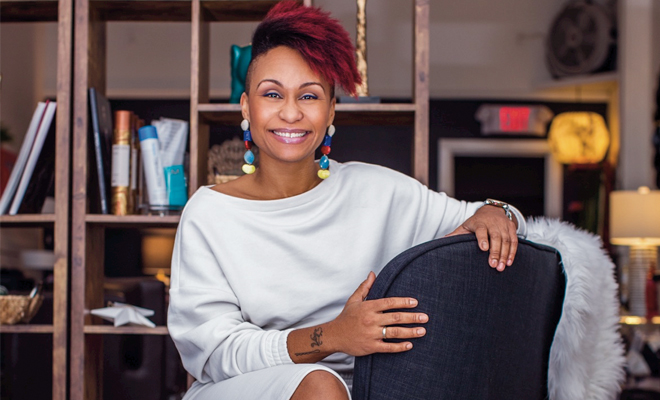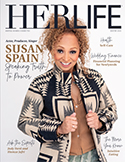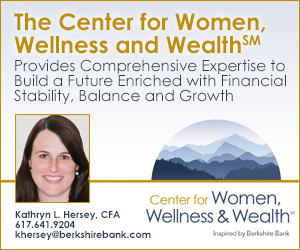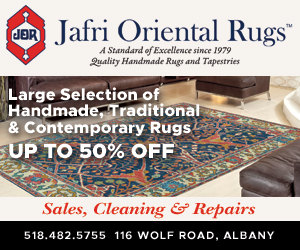 Michael Rowe
Michael Rowe
Sometimes in life we have to choose our battles; I choose not to fight my hair.
How many times through life have Black and Latina women been in the trenches throwing all we have at our hair? The styling jam, the extensions of yak hair, sew-ins, relaxers to straighten or the Wave Nouveaus and Jheri curls to straighten and curly perm our hair at the same time just to make it manageable. And let’s not forget the bleach, color, finger waves and roller sets(this can sometimes take years under the dryer, which translates to 40 days and 40 nights in the desert; bring water). How did we get here? As if we don’t have enough to fight with on the daily, we choose to fight our-selves; I mean our hair.
Now I’m not saying I don’t love beauty and all that is hair. But I am saying I choose not to fight it anymore. I don’t want to conform, I do not want to beat and flatten myself, I mean my hair, to fit society’s biased norms. I love being unapologetically me. Hair, no hair, kinky, zigzag wiry hair! For years I’ve interacted with so many women who don’t know how to live in the hair that naturally grows from their heads. Whether for a job, a man, society, our grandmothers, you know they always have something to say about your hair. Ha!
When I went natural, my maternal grandmother would always say, “Why don’t you press your hair straight? It would be so lovely.” “Oh, that’s how you’re wearing your hair,” or “That looks nice” (in the most sarcastic tone ever). That never stopped me from wearing my hair the way I chose because I experienced hair trauma at a very young age in various ways.
The earliest memory I have was when my father asked me if I wanted a haircut. I was about five or so, and of course I said yes. I was so excited but honestly had no idea what a haircut entailed. Haircuts weren’t centralized in most Black households unless you were a boy or an adult. A little backstory: my father was the family barber; he cut all the boy cousins’ hair as well as my Grandfather Bo’s hair on the regular and would precisely cut his own. I would stand for hours watching my father groom his hair in the bathroom mirror like an expert. I have male grooming down to a science thanks to my father! My oldest cousin, O, who is a barber and owns his own shop now, cuts my dad’s hair; talk about full circle. Now, back to the big day! I remember sitting in the kitchen on my grandmother’s green kitchen sitting step stool, you know the one that has the foot rest that can come out or be tucked in and makes a squeaking noise after having it a while.
I remember this day like yesterday. I had the cape on and here came the clippers; zoom zoom buzz buzz, my hair hit the floor. I still wasn’t able to really process what was happening because, again, haircuts were not a part of my life up ’til that point. It was all ponytails, braids and twists until it wasn’t. I think this was the point in my life that I learned that my hair couldn’t and didn’t define me, even though society wanted to define me by my hair. I remember going places with my dad and people would think I was a boy, not just because of my haircut but because my name was Erin which they mistook for Aaron (the boy version) and I can’t forget the navy blue Velcro PONY® sneakers my dad got me to go with my fresh new haircut. So yeah, basically I was a boy; I kid, I kid! Overall, I didn’t feel any difference having hair versus not having any at all.
On occasion I would get my hair done by our cousin, Shirley, from whom I learned so much about hair by just watching. She taught me how to corn roll. I would practice on this little brown baby doll with hair that was sewn in a circular pattern, which made it ideal to practice on. She was also my first introduction to seeing straightening relaxers done in the kitchen on her daughters’ hair; they had so much hair. It was always so healthy and pretty looking. I knew one day I could do that too; her hands were naturally blessed.
My main source of hair trauma was doing my sister’s hair; we are 11 years apart. I was really good at ponytail twists with the bo-bos or knockers hair tie accessories (this term depends on where you are from) and braids. This skill made me the designated hair doer for my younger sister and let me tell you, to this day I am still traumatized. I used to love braiding. I would do it every day. Unfortunately, after experiencing the screaming and curdling cries of my sister, who was clearly in pain because her hair was so coarse and curly–I mean, she would cry so hard to the point of a bloody nose–I would be on the verge of tears as well and hated every minute of it. It was hard and it hurt that she was hurting but she had to get her hair done, right? I was completely turned off from doing children’s hair ever again in life and stopped letting people know I could braid; eventually I stopped braiding.
My maternal grandmother’s hands could straighten hair like no one else. She would get to that root with the flick of a wrist and not even touch the scalp with a hot comb, usually heated on the kitchen gas stove. I loved when she would press my hair with the hot comb; she did it with such ease. This was a total 180 from having my hair straightened by my mother. With her, wash day was on Saturday, followed by tears and pain all day Sunday as she fought my hair to try to make it straight, only for it to revert before the end of the night back to coarse and curly, depending on how much I cried and sweated through the process.
We are taught early on that beauty is pain, and in order to achieve the pinnacle of beauty we must endure some form of pain. Most of us pass this pain and trauma on to our children, straightening our babies’ hair before they are even in puberty due to marketing campaigns with little to no regard for health and safety.
In our community, we start conforming our children very young to fit into a society that we hope will accept and not reject our perfectly coiffed, well-dressed babies. I relaxed my daughter’s hair when she was five; I thought I was doing something helpful but soon realized I would regret that decision. Over time, as I expanded my hair knowledge and education, I learned how detrimental relaxers are to our health and our hair.
It’s only been in the last decade or so that our hair has been of interest to the masses. I will say it’s helped us discover more of our identity and how our hair performs when it’s properly hydrated and cared for. Our hair is marketable and currently trending to the point you have everyone reaching and campaigning to have the next Black woman with natural or curly hair as the face of products, fashion, beauty; the list can go on. I only say this to say we need to do better. Our hair is great, just like our culture, for marketing and making money for large corporations, but not great enough to be standard in our cosmetology curriculum, or to be considered a life that matters.
In hair school, we get one chapter dedicated to all that is Black hair. The information is compacted into a brief summary of the various natural and protective styles we wear. We are not taught about our hair or how to care for Black hair in its natural state; we are taught to straighten, curl and chemically manipulate it. We get two hair educations, one in school and then the second out of school. Sometimes outdated, damaging practices are learned and repeated over and over again. I commend stylists such as Jennifer Lord (@naturalhollywood), Jamie Amadio (@girljamie) and Danielle Green (@radicallycurly) for creating petitions to teach textured hair in cosmetology school. In New York State, you need 300 hours to receive a natural hairstyling license; why is this not included in the overall curriculum? Hair care practices and education further display the racial divide in our country.
I’m certain we all have a hair story, history or trauma rooted in our hair experience, whether you are Black, White, Asian, Indian, Native, Jewish, Muslim, Rastafarian, male or female. We all have stories to share, some funny, some sad, some of new beginnings and endings. Curly girls wanting to be permanently straight, straight girls wanting to be curly. Blondes wanting to be brunettes and brunettes wanting to be blonde. Grays wanting to be youthful and the youth wanting to be gray. See, we have to be enough for ourselves in the exact moment we are in. Our hair can be fully loaded and a lot to unpack.
We have to decide that we are enough and that our hair should not be a fight. It should be an enhancement, a complement to what we already have and who we already are.
I am certain we all have had some form of an unrealistic expectation placed on our hair from outside influence, which makes us question our enough. I do know there came a point in my life I made the decision not to fight anymore, fight my hair, myself or societal expectations. I am enough and so are you! Remember, good hair is healthy hair.
I have an ask of you. Please help us end hair discrimination in the workplace and schools by visiting thecrownact.com and sign the petition. As of July 2020, only 7 of 50 states have passed this law. Please consider how that has affected the development of children and individuals’ ability to have gainful employment. ■
Written by: Erin J. Hundley
As an American board-certified hair colorist, Erin J. Hundley actively strives to broaden her skill set through education, which is amplified through her work as an educator. A student and alumni of Hair Mastered with Sam McKnight, she has been featured in bangstyle.com and Sophisticate’s Black Hairstyles magazine, who named her salon, Red Door Beauty & Wellness, the “Beauty Hotspot”. Recent projects include the “Rebel” shoot for Walker Wear in Pattern Magazine: Issue #17. Erin has also furthered her reach with philanthropy and human rights advocacy by lending her voice and support to various causes that impact the global community. She has worked with organizations such as Artecorte Cuba and Gilberto “Papito” Valladares’ Cosmetology School in Old Havana, Cuba, contributing to their Scissors for Cuba program, S.E.A.T Center-YouthBuild, Girls Inc. S.T.E.M Summit, Black Expo and NYC Black Women’s Political Club.







